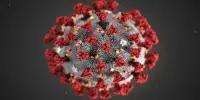Research has shown that adopting a healthy lifestyle is associated with a reduced mortality risk in childhood cancer survivors. Childhood cancer survivors are at an increased risk of developing chronic health conditions later in life, such as heart disease, obesity, and secondary cancers. However, adopting healthy habits can help to reduce this risk.
Childhood cancer survivors have a higher mortality rate than the general population, but survivors who live a healthy lifestyle and have fewer heart disease risk factors have a lower risk.
A report from the Childhood Cancer Survivor Study (CCSS) demonstrates the significance of living a healthy lifestyle for adults who were treated for cancer as children. The study is the first to discover that the specific primary causes of death in long-term survivors are many of the same leading causes of death in the general population of the United States, and that they frequently occur at younger than expected ages. Adult survivors of childhood cancer have four times the risk of late mortality as the general population, even 40 years after diagnosis, according to the study.
However, there is reason for optimism in the study: survivors who did not have certain modifiable lifestyle and cardiovascular risk factors had a lower risk of death, implying that survivors may be able to improve their odds. Survivors who followed a healthy lifestyle, for example, had a 20% lower risk of death than those who followed an unhealthy lifestyle. The findings were published in The Lancet today.
We were the first to discover that decades after treatment, these excess deaths are primarily due to the same leading causes of death as in the general population, including second cancers, heart disease, cerebrovascular disease/stroke, chronic liver and kidney disease, and infectious causes of death, experienced at a younger age and at a higher rate in childhood cancer survivors.
Stephanie Dixon
Empowering survivors with the numbers
Despite the discovery of excess mortality in survivors, the researchers discovered that patients’ health behaviors influenced their risk. Maintaining a healthy lifestyle (defined as maintaining a healthy weight, drinking no more than a moderate amount of alcohol, not smoking, and exercising at or above the intensity recommended by the Centers for Disease Control guidelines) was associated with a 20% lower risk of mortality when compared to those who did not.
“These findings provide important evidence that the high risk for mortality that this population faces may be able to be reduced through changes in their health behaviors,” said senior author Greg Armstrong, M.D., M.S.C.E., chair of the St. Jude Department of Epidemiology and Cancer Control. “This is important because our goal is to extend the lifespan of survivors and to improve their healthspan as well.”
Aside from lifestyle, several major risk factors for heart disease and related issues were linked to a higher risk of death. Survivors with hypertension or diabetes died at a significantly higher rate than those without these conditions. These conditions, however, are modifiable; patients can improve or prevent them, and physicians can provide effective treatments for these diseases.
“Much research has demonstrated that survivors are vulnerable to the early onset of chronic disease and mortality,” said co-author Melissa Hudson, M.D., director of the St. Jude Cancer Survivorship Division. “The study highlights the importance of encouraging survivors to practice healthy behaviors and maintain good control of cardiovascular disease risk factors in order to improve their healthspan and lifespan.”

Excess mortality and cause of death in survivors
In addition to the importance of potentially modifiable risk factors, this report is the first to detail that the specific primary causes of death in long-term survivors are similar to the leading causes of death in the U.S. population, occurring earlier in survivors.
“We discovered that long-term survivors of childhood cancer are dying in greater numbers than would be expected for the general, aging population,” said first and corresponding author Stephanie Dixon, M.D., MPH, St. Jude Department of Oncology. “We were the first to discover that decades after treatment, these excess deaths are primarily due to the same leading causes of death as in the general population, including second cancers, heart disease, cerebrovascular disease/stroke, chronic liver and kidney disease, and infectious causes of death, experienced at a younger age and at a higher rate in childhood cancer survivors,” Dixon said.
Treatments for childhood cancers have improved to the point where over 85% of U.S. patients are effectively cured of their primary tumor after frontline treatment. As more patients survive their childhood cancer, there is a growing population of adult survivors. By comparing the CCSS cohort to the public, the researchers found that decades after treatment survivors still experience four times the expected risk of death.
The largest cancer survivor cohort feeds discovery
Using detailed health data from thousands of CCSS participants, the researchers were able to understand the issues that survivors face. The CCSS is the largest cancer survivor cohort in North America, accounting for an estimated 20% of all childhood cancer survivors in the region. The researchers were able to use this massive amount of data to statistically isolate variables influencing survivor mortality. Even after controlling for common confounders such as sociodemographic characteristics, the group found that the mortality gap between survivors and the general population persisted, but so did the protective effects of a healthy lifestyle.
“What was most exciting to see was that, independent of prior treatment exposures and sociodemographic factors, a healthy lifestyle and the absence of hypertension or diabetes were each associated with a reduced risk of health-related mortality,” Dixon said. “This suggests that, while continued efforts to reduce treatment intensity while maintaining (or improving) 5-year survival are required, future research should also focus on interventions for modifiable lifestyle and cardiovascular risk factors that may need to be specifically tailored to survivors in order to reduce chronic disease development and extend the lifespan of childhood cancer survivors.”
Intensive treatments continue to tax childhood cancer survivors
Patients receiving more intensive therapies continued to die at a higher rate than other survivors. Many studies have been conducted to reduce the risks of therapy, but many survivors in CCSS were treated before improved techniques were widely available. This study demonstrated that physicians and researchers must consider interventions that can reduce risk for the vulnerable population of survivors who were subjected to aggressive therapies as children.














